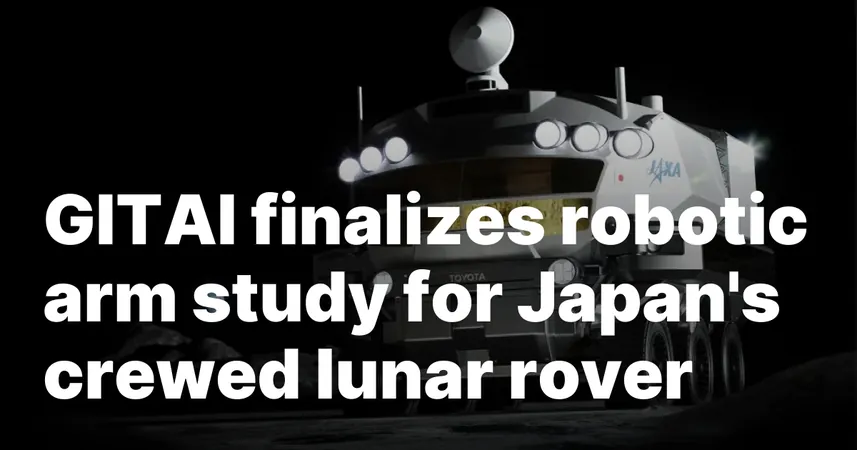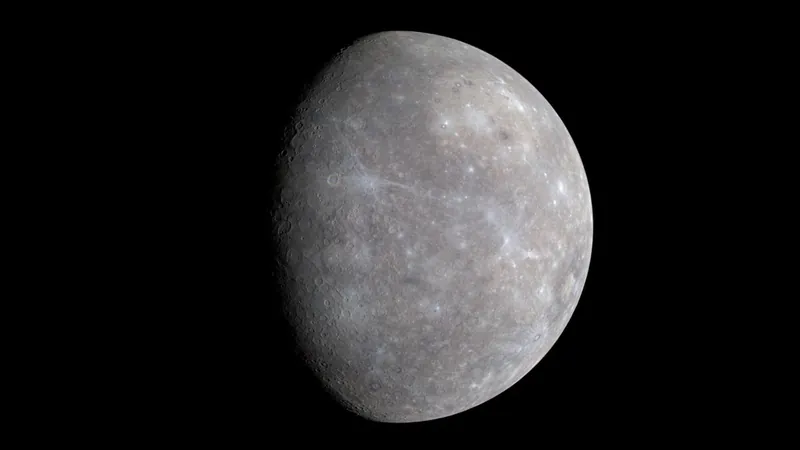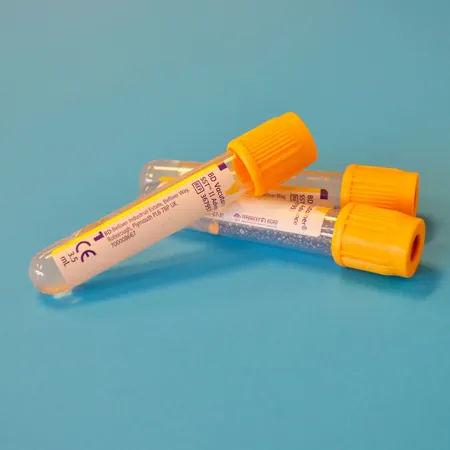
GITAI Unveils Cutting-Edge Robotic Arm for Japan's Upcoming Lunar Rover
2025-03-31
Author: Arjun
Space robotics innovator GITAI has just revealed the completion of a groundbreaking concept study for a robotic arm, poised to play a crucial role in Japan's upcoming crewed lunar rover, expected to launch in the early 2030s.
In a statement from GITAI's founder and CEO, Sho Nakanose, the Torrance, California-based company's Japanese subsidiary wrapped up this significant study on March 31. The endeavor was funded by a $160,000 contract with Japan's space agency, JAXA. This fulfills a pivotal step in the project that focuses on the design and functionality of the robotic arm, as well as its operational capabilities for both remote and autonomous tasks.
Nakanose hinted at exciting prospects ahead, indicating that the next phase of development will likely warrant several million dollars in funding from JAXA. This funding will aid in the creation of the pressurized lunar rover, a collaborative effort with the automotive giant Toyota. The rover is set to enhance human exploration of the Moon, specifically targeting its polar regions, as part of Japan’s strategic contribution to NASA's Artemis program. This initiative underscores a historic partnership, allowing astronauts to experience the Moon's surface for extended periods, up to 30 days, in a mobile and pressurized habitat.
In return for Japan taking charge of the lunar rover's development, the United States has embraced the inclusion of Japanese astronauts in the Artemis lunar missions, reflecting a deepening international collaboration in space exploration.
"While no official launch date has been confirmed yet, JAXA has set an internal target between 2031 and 2035. This timeline is contingent on Artemis scheduling, rover preparedness, and available launch windows," explained Nakanose. He also specified that the development phase outlined in the GITAI contract is expected to culminate by FY2030, paving the way for a timely launch shortly thereafter.
One of the key features of this rover is its autonomous operational capability. During periods without crew, the robotic arm will engage in site preparation and scientific missions, laying the groundwork for crewed expeditions.
GITAI's efforts will henceforth be meticulously guided by ongoing collaborative frameworks between JAXA and NASA, specifically via the Artemis Accords and their Gateway partnership, ensuring seamless interoperability and mission alignment for this historic venture.
As the world watches, the stage is set for a new era in lunar exploration, where technological innovation and international cooperation forge pathways to the stars. Stay tuned as we follow this thrilling development in space exploration, and be prepared for more surprises from the cosmos!



 Brasil (PT)
Brasil (PT)
 Canada (EN)
Canada (EN)
 Chile (ES)
Chile (ES)
 Česko (CS)
Česko (CS)
 대한민국 (KO)
대한민국 (KO)
 España (ES)
España (ES)
 France (FR)
France (FR)
 Hong Kong (EN)
Hong Kong (EN)
 Italia (IT)
Italia (IT)
 日本 (JA)
日本 (JA)
 Magyarország (HU)
Magyarország (HU)
 Norge (NO)
Norge (NO)
 Polska (PL)
Polska (PL)
 Schweiz (DE)
Schweiz (DE)
 Singapore (EN)
Singapore (EN)
 Sverige (SV)
Sverige (SV)
 Suomi (FI)
Suomi (FI)
 Türkiye (TR)
Türkiye (TR)
 الإمارات العربية المتحدة (AR)
الإمارات العربية المتحدة (AR)